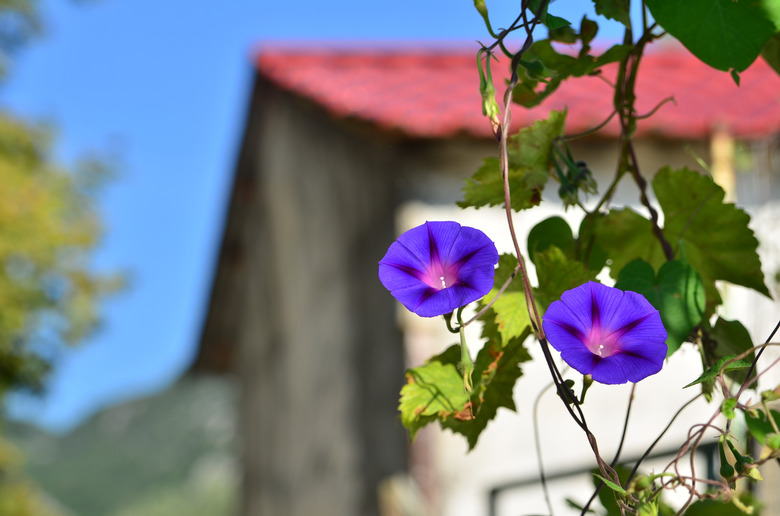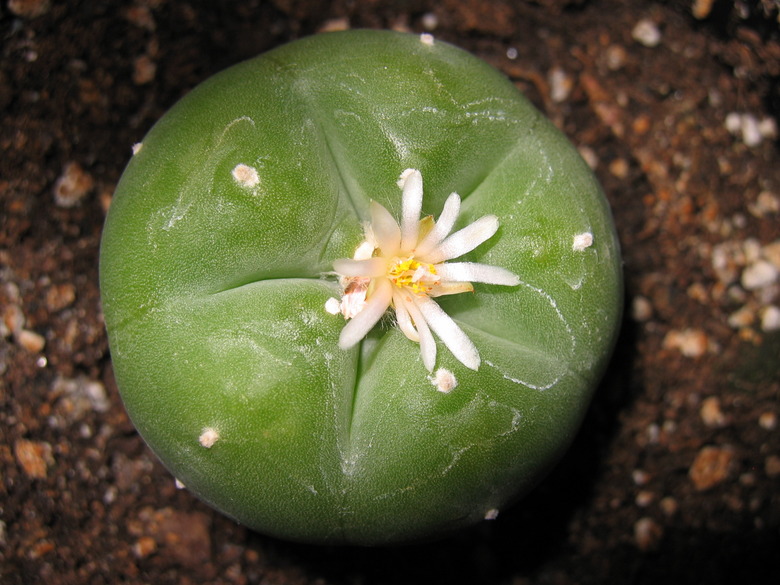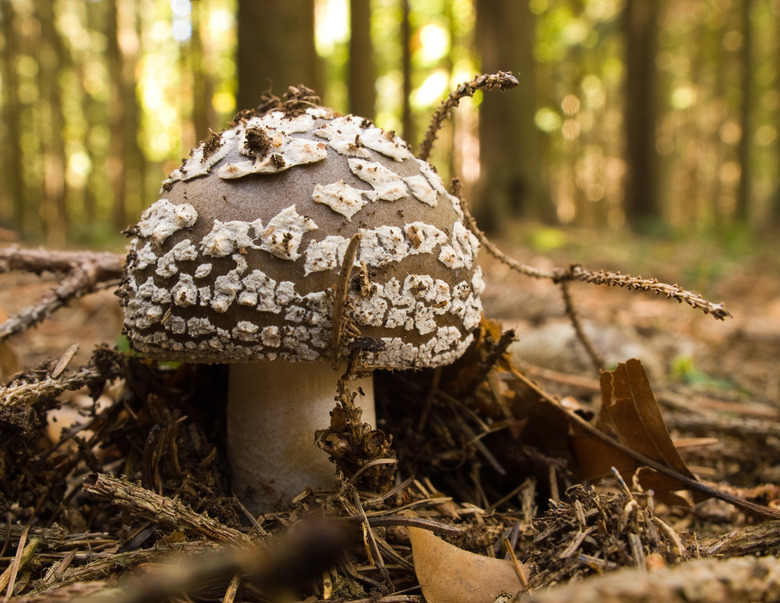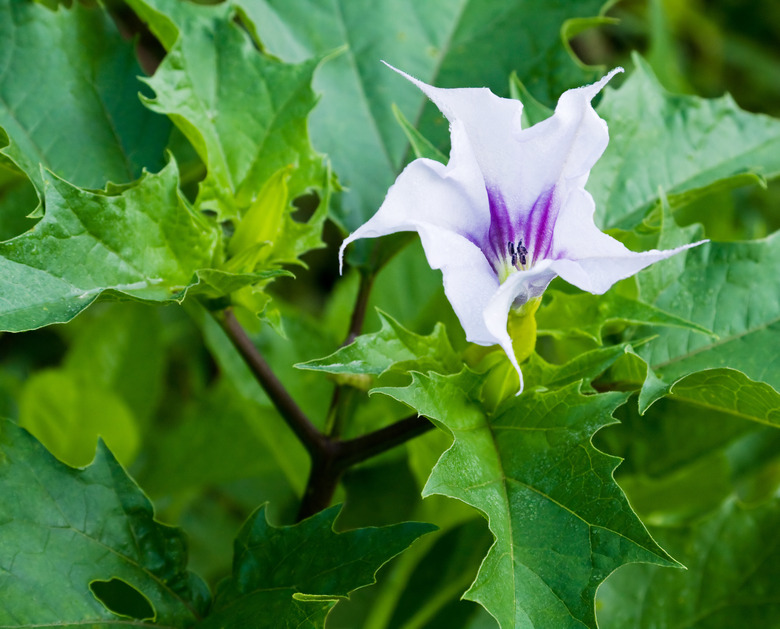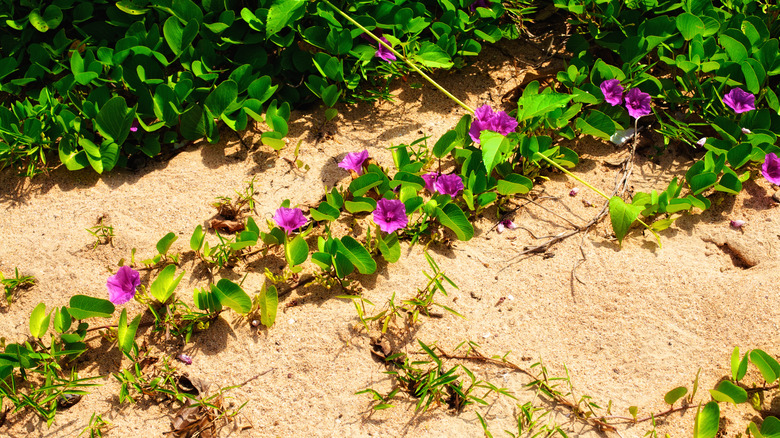Hallucinogenic Plants Native To The United States
Native plants and fungi across the United States contain naturally-occurring hallucinogens. Many of these species have histories in the shamanistic rituals of Native Americans and several are still used as recreational drugs. However, they all come with negative side effects and some care easily confused with deadly variants. Several of these plants, cannabis being the most famous example, were imported to North America, but a wealth of plants indigenous to the U.S. have hallucinogenic properties.
TL;DR (Too Long; Didn't Read)
Leaves, seeds, and mushrooms across the United States can dramatically alter human consciousness when ingested. Though many have a long history of human use, they all carry risks.
DMT-containing plants grow wild
DMT-containing plants grow wild
Dimethyltryptamine, or DMT, can yield intense hallucinations when extracted from plant matter and vaporized. It can be found in common plants growing throughout North America including Bulbous canarygrass (Phalaris aquatica), an invasive weed-like grass which grows anywhere from lawns to cracks in the sidewalk. DMT content varies between strains. Other plant-based sources of DMT native to the U.S. include Prairie Bundleflower (Desmanthus illinoensis), an erect plant with clusters of white flowers which grows in many areas including Pennsylvania, Florida, Texas and North Dakota.
DMT is not orally-active on its own, though it can be made so by ingesting a monoamine oxidase inhibitor (MAOI), a classification of drugs previously used as antidepressants, beforehand. South American cultures have traditionally ingested it as a tea made of dried plant matter with high a high DMT concentration (such as banisteriopsis caapi) and plants that contain MAOIs (such as Syrian rue).
Peyote has a long history of use
Peyote has a long history of use
The peyote cactus grows in a narrow strip of desert on the Texas-Mexico border, extending into the Chihuahua desert of Mexico. It contains more than 60 alkaloids but it derives its fame from its principal hallucinogenic agent: mescaline. Used widely in traditional shamanic practices by a variety of ancient cultures, peyote has an acrid, bitter taste, and provides an experience that often alters a users consciousness, gives brightly-colored hallucinations and causes vomiting. It is illegal to sell, possess or ingest peyote in the U.S., but The Native American Church is exempt from this ban and uses peyote extensively in its ceremonies.
Psilocybes and other mushrooms require caution
Psilocybes and other mushrooms require caution
Psilocybe species of mushroom, more commonly known as "magic mushrooms," grow in cow and horse manure. They are commonly found in Florida and the Southern Gulf States, Texas and the Pacific coastline. Magic mushrooms are commonly dried and then brewed as teas or eaten. Typically one to two grams of the mushrooms is taken to provide the user with an LSD-like "trip." The principal hallucinogens in the psilocybe species of mushroom are psilocybin and psilocin. While they are non-lethal, they are similar in appearance to several other forms of poisonous mushrooms.
Several other varieties of mushroom native to the U.S. possess hallucinogenic properties, including Fly Algaric and Panther Cap mushrooms, both of which contain the psycho-active substance muscimol. These kinds of fungi have a long history of use in ancient Siberian tribes. Not only do these varieties induce hallucinations, they also can lead to seizures or comas if ingested. They often grow in close proximity to the Death Cap mushroom, which looks exactly the same as the Panther Cap but, as its name suggests, is highly poisonous.
Scopolmine-containing plants can be deadly
Scopolmine-containing plants can be deadly
Jimson weed (Datura stramonium), Deadly Nightshade (Atropa belladonna) and Mandrake all contain the active hallucinogenic agents atropine and scopolmine. Ingesting any of these plants will cause violent hallucinations, seizures and in many cases death. Mandrake is used as an ingredient in several herbal cures for conditions including constipation and rheumatism, but when eaten in all but the smallest doses, the effects can be deadly.
Lysergic Acid Amide found in seeds
Lysergic Acid Amide found in seeds
Several varieties of plant native to the U.S. contain Lysergic Acid Amide, or LSA, in their seeds. When the seeds of these plants are crushed, eaten whole or made into tea, they will trigger hallucinations akin to those caused by LSD.
The Morning Glory plant (Convolvulacea) is the most famous LSA-containing plant. Hawaiian Baby Woodrose (Argyreia nervosa), which as its name suggests grows in Hawaii, and Sleepy grass (Achnatherum Robustum), which is found in the Southwest U.S., also contain high levels of LSA.
References
- Digital Commons: The Battle for the Legality and Legitimacy of Ayahuasca Religions in Brazil
- National Center for Biotechnology Information: Beringian Origins and Cryptic Speciation Events in the Fly Agaric (Amanita Muscaria).
- Citeseerx: Hallucinogens and Dissociative Agents Naturally Growing in the United States
- National Center for Biotechnology Information: Antidepressive, anxiolytic, and antiaddictive effects of ayahuasca, psilocybin and lysergic acid diethylamide (LSD): a systematic review of clinical trials published in the last 25 years
- Canadian Journal of Plant Science: Alkaloid Content of Reed Canarygrass (Phalaris arundinaceae L.) As Determined by Gas-liquid Chromatography
- Alliance of Crop, Soil, and Environmental Science Societies:
Cite This Article
MLA
Sutton, Dominic. "Hallucinogenic Plants Native To The United States" sciencing.com, https://www.sciencing.com/hallucinogenic-plants-native-united-states-8059409/. 23 April 2018.
APA
Sutton, Dominic. (2018, April 23). Hallucinogenic Plants Native To The United States. sciencing.com. Retrieved from https://www.sciencing.com/hallucinogenic-plants-native-united-states-8059409/
Chicago
Sutton, Dominic. Hallucinogenic Plants Native To The United States last modified March 24, 2022. https://www.sciencing.com/hallucinogenic-plants-native-united-states-8059409/
